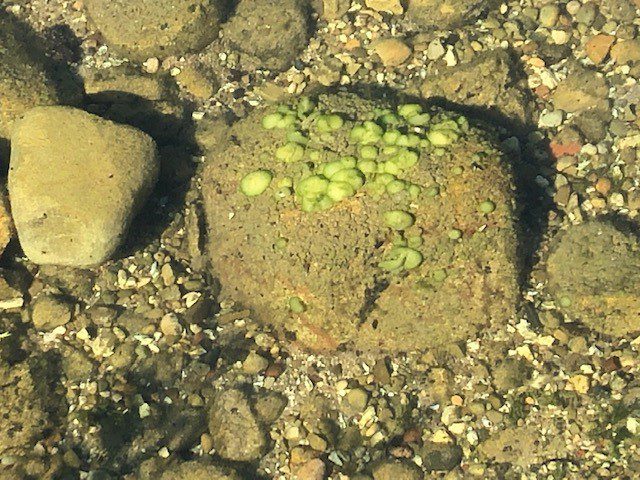
I was recently asked what the bright green, gelatinous blobs on the rocks in the lake were. I welcome an opportunity to get out of the office and take a field trip, so I walked down to the lake to see for myself.
Have you seen these?
I didn’t know what they were so did a quick internet search. I came across a comic book character actually named Horrible Gelatinous Blob or H.B. Blob described as:

A translucently green, protoplasmic, tentacled, three eyed alien who likes to swallow his prey whole, after which, the victim can be seen suspended in him. H.G.B. is easily angered and has a son Brett.
Pretty sure that wasn’t it! so sent some pictures to colleagues for identification. Thank you, Indiana Lakes Management Society! It took less than 5 minutes for a response:
Ophrydium
The definition, in the simplist terms I could find, is these blobs are made by a colonial microscopic single-celled protozoan called Ophrydium versatile. They can be found all over the world in fresh water. The individual cells line up side by side in the “blob” and attach themselves to a jelly-like substance they secrete. They are symbiotic with microscopic Chlorella algae which live inside the Ophrydium cells and give the blob its green color. www.askanaturalist.com
The creator of H.G.Blob has a scientific sense of humor.
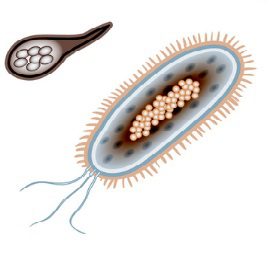
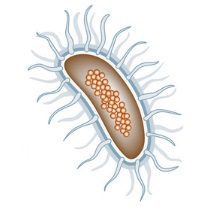
pro·to·zo·an
[ˌprōdəˈzōən]
NOUN
- a single-celled microscopic animal of a group of phyla of the kingdom Protista, such as an amoeba, flagellate, ciliate, or sporozoan.
This scientific information is all well and good, but most people just want to know if they are good or bad. The answer is they are normal and not harmful or dangerous. In fact, they may help filter and help clean up the water column. And it seems these little guys are quite interesting to a select group of people. A colleague asked me to send her a sample so she can look at them under a microscope. What seemed like a simple question “What is that?” has turned into a great science lesson.
Click to learn more about Ophrydium.
The excitement of learning separates youth from old age. As long as you’re learning, you’re not old.
Rosalyn Sussman Yalow
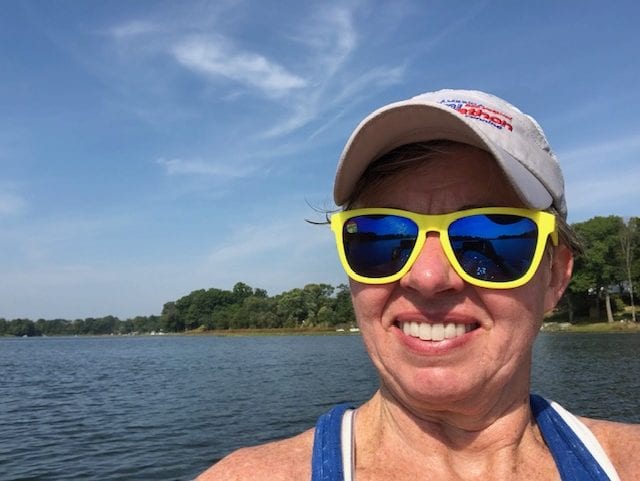
Hi, I’m Debbie Palmer. I received a BS in Horticulture from Purdue University. Here at LMEF, I am responsible for outreach presentations, monitoring the lake and it’s wetlands, project manager for restoration and research projects, and act as a community resource for all things related to the well-being of Lake Maxinkuckee and its surrounding watershed. I completed Indiana Watershed Leadership Academy, volunteer with the Indiana Clean Lakes Program, Hoosier River Watch and Marshall County Lakes and Waters and serve as a Board Member for Indiana Lakes Management Society.

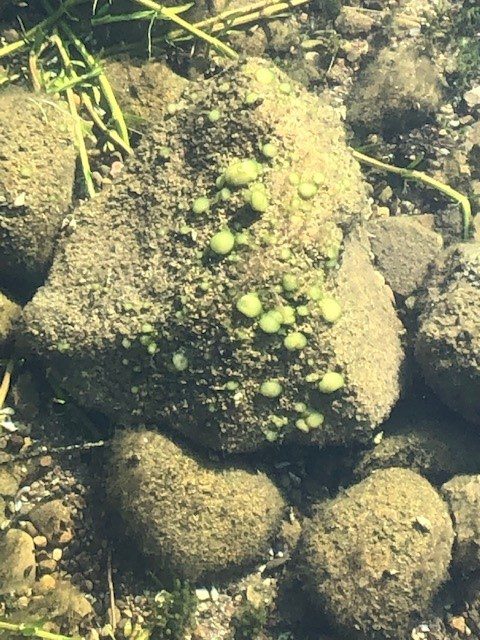
Recent Comments